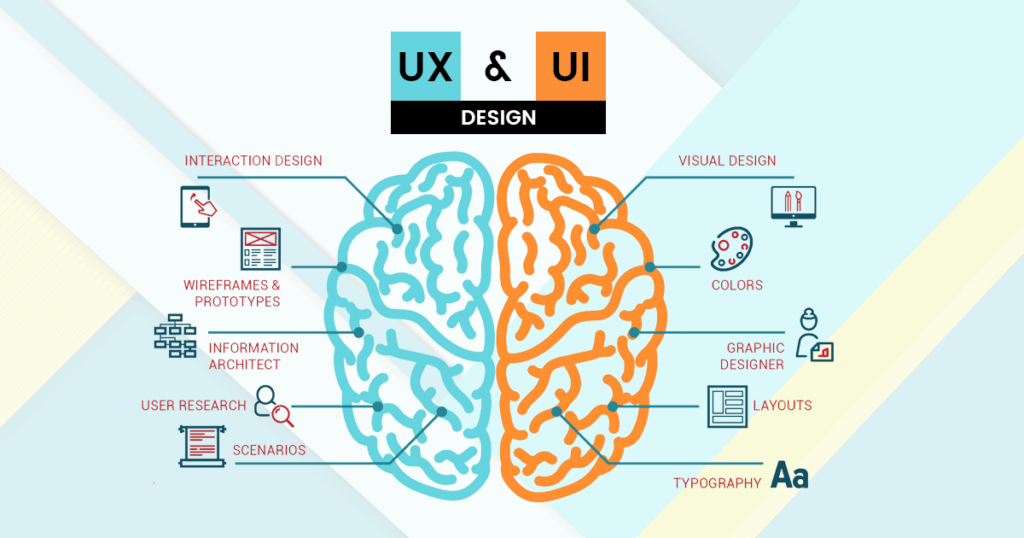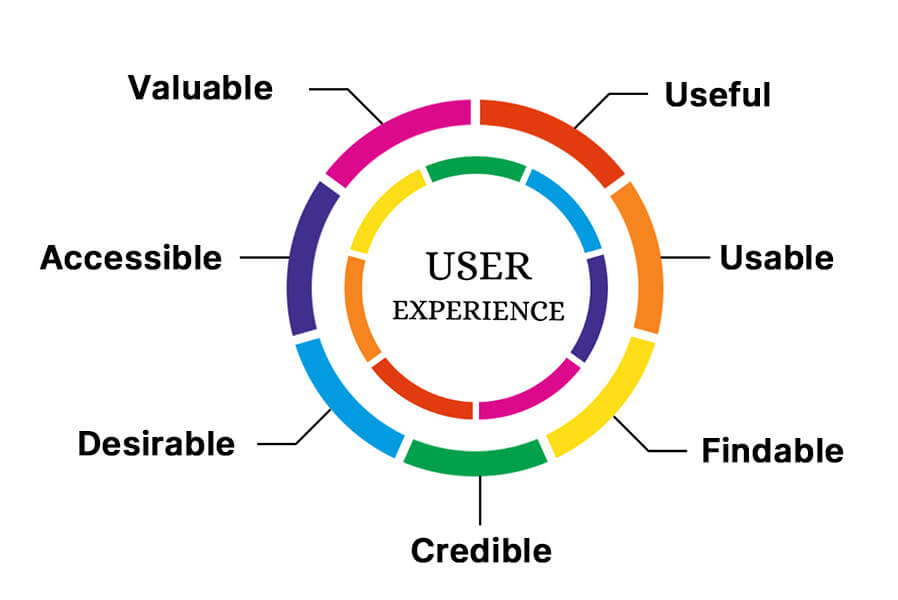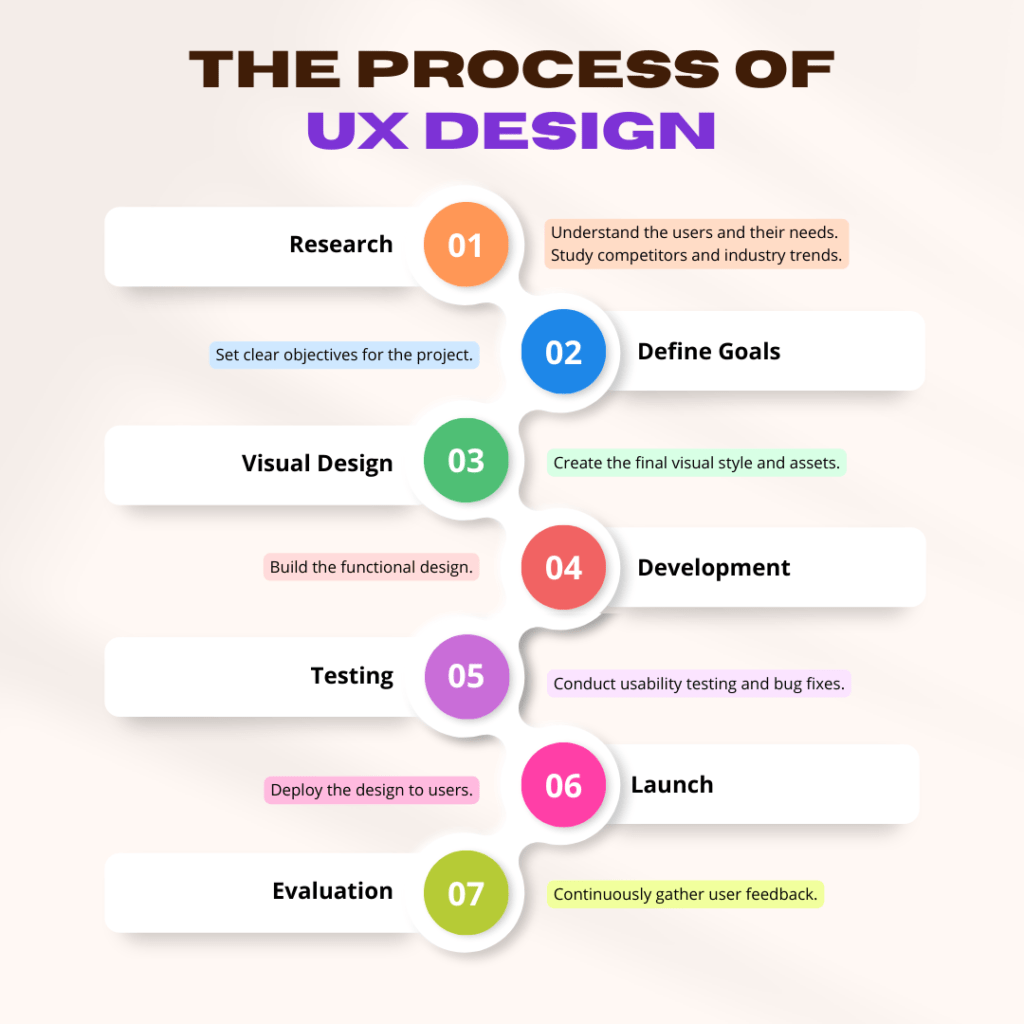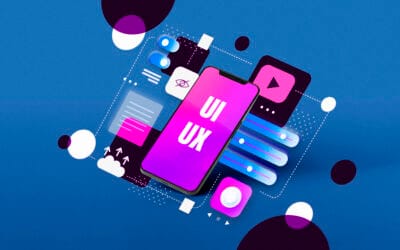If you’re a designer, you must be well aware that creating user experience design is important for effortless interaction. Whether it’s an app or just a website, UX design is a not-to-be-ignored part. To help you understand better, we’ve curated this comprehensive guide with the following infographics.
Let’s delve deeper into the sea of designs…
What is User Experience Design?
UX design is all about making things better for users. It’s the process of transforming products, systems, or services that are functional and delightful to use.
Creating UX design bridges technology and human behavior, focusing on how users perceive, interact with, and feel about a product.
Let’s take a few examples to understand it better. For example smartphone apps like Instagram or TikTok. Their intuitive design and clear layout make it easy to find what we’re looking for.
Next, online shopping platforms like Amazon or Myntra offer a smooth shopping experience with features like personalized recommendations, easy checkout, and clear product information.
Last, smart home devices like Alexa and Google Home are designed to be user-friendly, responding to voice commands and learning your preferences over time.
Why does User Experience Design Matter?
Before delving into the intricacies of UX design, it’s essential to understand why creating user experience design is so important. In a world where users have countless options and limited patience, a positive user experience can be a game-changer for businesses and organizations. Here’s why:
User Satisfaction
When users have a pleasant experience with a product or service, they’re more likely to be satisfied. Satisfied users are not only more loyal but also more likely to recommend the product to others.
Improved Usability
A good user experience of the website ensures that a website is easy to use, reducing the learning curve and frustration. Users can accomplish their goals effortlessly, whether it’s buying a product on the web or navigating through an app.
Increased Engagement
A well-designed user experience captivates users and keeps them engaged. This can lead to longer usage sessions and increased conversions, whether you’re running an e-commerce site or a mobile app.
Competitive Advantage
Users are more likely to choose a product that offers a superior experience over a clunky or confusing alternative.
Cost Savings
Investing in UX design upfront can save businesses money in the long run. It reduces the need for costly redesigns and support requests by addressing usability issues early in the development process.
Brand Loyalty
A positive user experience can foster brand loyalty. Users who have a strong emotional connection with a product or service are more likely to stick around and become long-term customers.
According to adamfard survey, even if 78% of businesses wants to offer best UX design still 45% of businesses fail to conduct UX design testing to ensure perfection of the product.
What is the Difference Between UI and UX Design?
UX and UI design are two closely related terms that often get used interchangeably, but they have distinct meanings and roles in the design process.
Here’s a breakdown of the key differences between UX/UI design excellence:

UX (User Experience)
- Focuses on the overall experience a user has when interacting with a product or service. This includes everything from the initial impression to ongoing satisfaction and loyalty.
- Involves research, analysis, and testing to understand user needs, motivations, and pain points.
- Aims to create products that are usable, enjoyable, and efficient.
UI (User Interface)
- Focuses on the visual and interactive elements of a product or service. This includes the layout, colors, typography, buttons, and other elements that users see and interact with.
- Involves design and development to create an interface that is aesthetically pleasing, intuitive, and easy to use.
- Plays a crucial role in shaping the overall user experience.
So, these were the core difference between UX/UI design excellence. Let’s now talk about benefits of user experience design.
What are the Core Benefits of Creating User Experience Design?
To create exceptional user experience design, designers adhere to a set of core principles. These principles guide the design process and ensure that the end product aligns with user needs and expectations:

User-Centered Design
The user is at the center of everything in UX design. Expert UX Designers conduct extensive research to understand user needs, behaviors, and pain points. This research informs the design decisions at every stage.
Usability
Usability is about making products easy to use. It involves clear navigation, intuitive interfaces, and minimizing cognitive load for users. When something is usable, it means users can achieve their goals efficiently.
Consistency
Consistency in design creates a sense of familiarity. Users should find similar patterns and elements throughout a product or website, which makes it easier for them to navigate and understand.
Accessibility
Accessibility ensures that a product is usable by people with disabilities. This principle emphasizes the importance of inclusivity and making technology accessible to everyone, regardless of their abilities.
Simplicity
“Simplicity is the ultimate sophistication.” This principle encourages designers to keep things simple and avoid unnecessary complexity. Simplified designs tend to be more user-friendly.
What is the Process of User Experience Design?
User experience design is not a one-time task but an ongoing process. The process typically involves several stages:

Research
The first step is to understand the users and their needs. This involves user interviews, surveys, market analysis, and competitor research. The goal is to gather insights that inform the design.
Planning
Once you have a clear understanding of users, it’s time to plan the design. This stage includes defining goals, creating user personas, and outlining the user journey.
Design
Design is where the magic happens. Designers create wireframes, prototypes, and visual designs based on the research and planning. This stage often involves iterative testing and refinement.
Development
Once the design is finalized, it moves to the development phase. Developers bring the design to life, ensuring that it’s functional and meets technical requirements.
Testing
Testing is crucial for identifying any issues or usability problems. User testing, A/B testing, and usability testing help ensure that the design meets user expectations.
Launch
After thorough testing and refinement, the product is ready for launch. This is when it becomes available to users.
Post-Launch Evaluation
The design process doesn’t end at launch. Continuous evaluation and improvement are essential. Feedback from users helps identify areas that can be enhanced.
What Tools Should a UX Designer Use?
UX expert designers use various tools to streamline the design process and create user-friendly experiences. Here are some commonly used types of user experience tools and names:
- Wire-framing and Prototyping Tools
- Usability Testing Tools
- Analytics Tools
- Collaboration Tools
Future of User Experience Design
The future of UX Design is an exciting frontier that promises to transform the way we interact with technology. Here is the future of creating user experience design…
Voice User Interfaces, for instance, is gaining prominence with the surge in smart speakers and voice assistants, creating a need for designers to craft seamless voice interactions.
Augmented Reality (AR) and Virtual Reality (VR) are pushing the boundaries of immersive experiences, from gaming to education and beyond. Next, Ethical design is also taking center stage, with a growing emphasis on user well-being, data privacy, and responsible AI use.
In addition, AI and machine learning are becoming integral to the design process, providing personalization and recommendations that enhance user experiences.
Therefore, the future is not just about making things easier to use; it’s about crafting meaningful, ethical, and personalized interactions in a rapidly evolving digital landscape.
Conclusion
Creating user experience design is about understanding users, addressing their needs, and making technology work seamlessly for them. So, whether you’re designing an app, a website, or any digital product, remember that UX design is the secret sauce that can turn users into loyal fans.
Do you want to create your future with just a click? Contact our UX designers to provide you with high-end UX-designed innovations that have the full potential to transform your startup into a big brand.
Frequently Asked Questions (FAQs)
What are the 5 elements of user experience design?
- Strategy
- Scope
- Structure
- Skeleton
- Surface
What is UX design with examples?
User Experience (UX) design is a multidisciplinary approach focused on enhancing the overall experience that users have with a product, service, or system. It encompasses various aspects, including usability, accessibility, aesthetics, and the emotional impact of the user’s interaction.
UX design examples are:- website design, mobile app designs, product designs, software interface designs, and e-commerce platforms.
What are the 4 C’s of UX?
The 4C’s of UX design are:- Clarity, Consistency, Convenience, and Constraint. These 4 C’s help designers create user experiences that are not only aesthetically pleasing but also functional, intuitive, and aligned with user expectations. Incorporating these principles can lead to a more positive and effective user interaction with digital interfaces, products, or services.



